Our baseball barrier netting is designed to keep games safe and organized. Perfect for training facilities, stadiums, and community fields, it effectively contains balls, protects spectators, and withstands harsh weather. With high-quality materials and custom options, we help you create a secure and professional environment for players and fans alike.
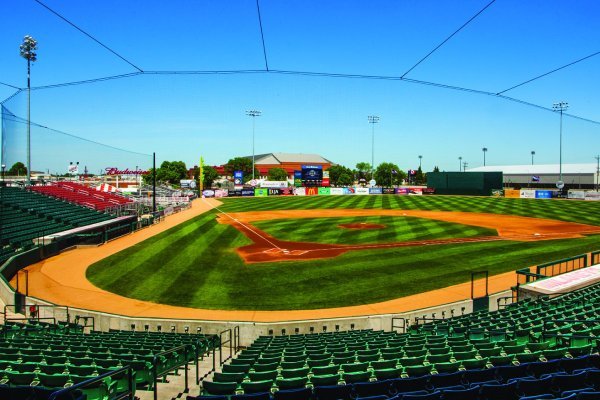
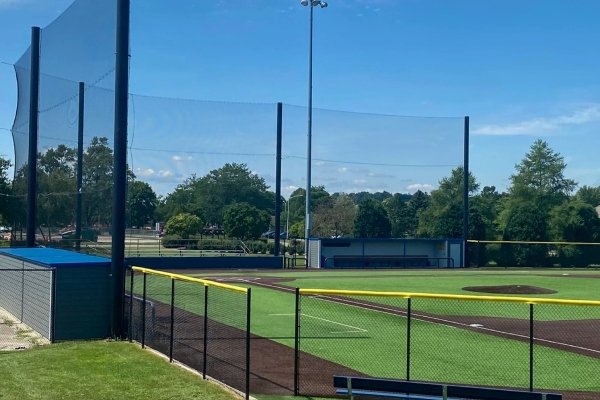
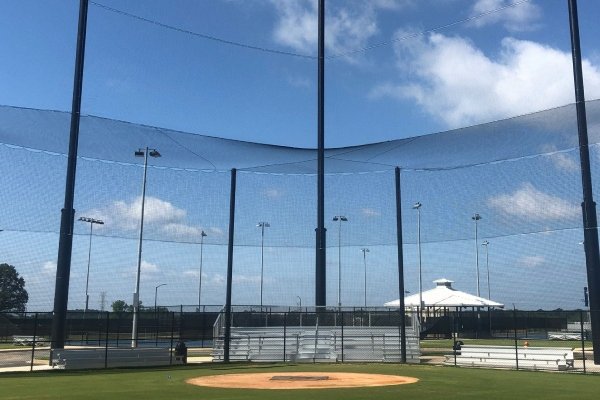
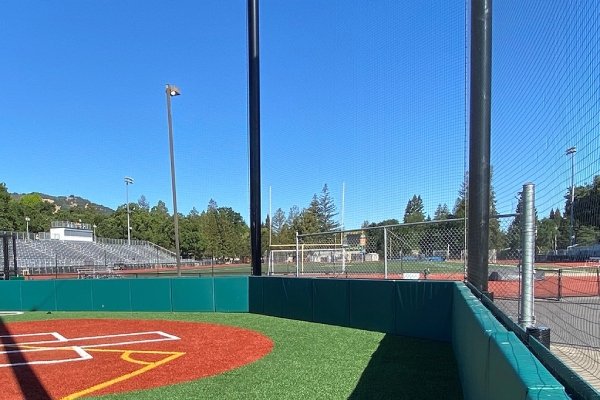
Our baseball barrier netting is engineered for extreme durability, withstanding intense impact and harsh weather conditions thanks to UV-treated, high-density polyethylene (HDPE) material. This means fewer replacements and lower maintenance costs for your facility. As a procurement manager, you’ll appreciate the long-term value and reduced downtime, ensuring a safer and more reliable playing environment season after season.
We offer full OEM/ODM support, including custom colors, logos, and mesh sizes tailored to your field’s dimensions and branding needs. Whether you need higher visibility for safety or specific tensile strength for different ball speeds, our flexible production capabilities ensure you get a perfect fit. This level of customization helps you maintain consistency across facilities while meeting unique project demands.
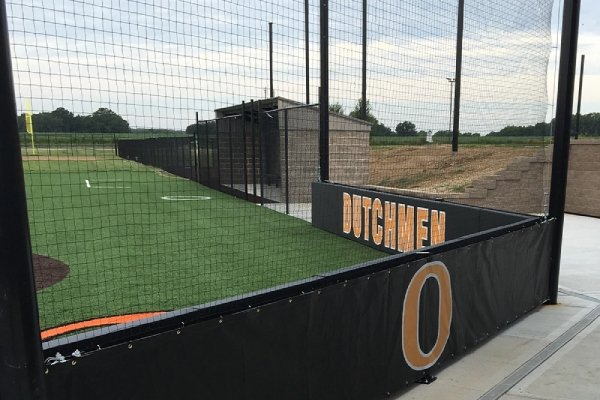
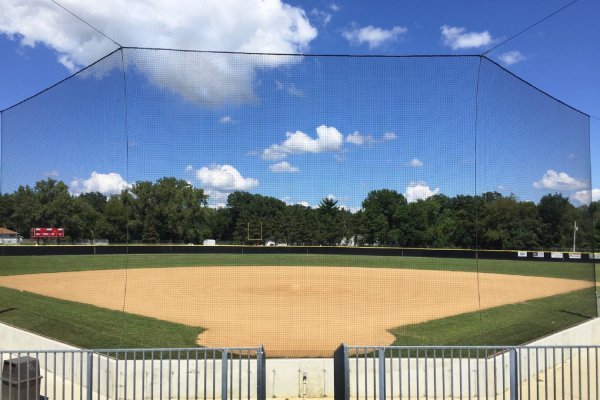
With an 11,000㎡ factory and 5,000㎡ warehouse, we support both small and large orders with rapid 15-20 day delivery via DHL/FedEx. Our streamlined logistics and large inventory mean you won’t face delays or supply chain disruptions. For procurement professionals, this translates to on-time project completion and the ability to respond quickly to urgent requests or last-minute expansions.
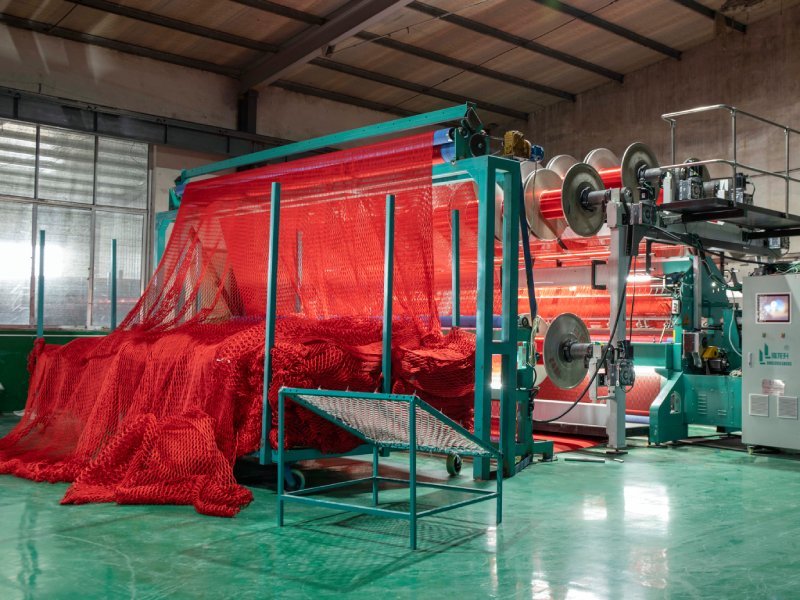
Looking for high-performance divider netting and safety netting solutions that combine durability, safety, and customization? Wenneting is your trusted partner! With 25+ years of expertise in manufacturing premium sports barrier nets, batting cages, and industrial safety nets, we help gyms, warehouses, children’s playgrounds, and sports facilities enhance safety, optimize space, and reduce costs.
Selecting the right baseball netting is critical for ensuring safety, protecting property, and enhancing performance in various sports environments. Whether you’re setting up a backyard batting cage, a community field backstop, or protective barriers for a professional stadium, the netting you choose impacts durability, functionality, and cost-effectiveness. The wrong netting can lead to frequent replacements, safety hazards, or property damage, while the right choice withstands impacts, weather, and time. This article explores baseball netting types and their applications, customization options, and a step-by-step installation guide to help you make an informed decision for your project, targeting approximately 2500 words.
Baseball netting serves multiple purposes: containing balls, protecting spectators, and preserving nearby structures. Factors like material, mesh size, twine strength, and environmental exposure (e.g., UV rays or wind) dictate suitability. For instance, outdoor netting requires UV resistance, while indoor setups prioritize abrasion resistance. Understanding these elements ensures your netting meets the demands of your specific application, whether for recreational, school, or professional use.
Baseball netting varies in material, construction, and specifications, each tailored to specific needs. Common materials include nylon, polyethylene (HDPE), polyester, and high-strength options like Dyneema. These differ in strength, durability, cost, and suitability for different environments.
Nylon is a top choice for its strength and longevity. Made from high-quality fibers like DuPont type 66, it offers superior break strength compared to other materials. Nylon is UV-resistant, temperature-resistant, and abrasion-resistant, making it ideal for demanding applications like professional batting cages or backstops. It comes in knotted or knotless weaves. Knotted nylon has knots at mesh intersections for added durability, while knotless versions reduce wear on balls and equipment due to their smoother surface. Twine sizes range from #15 (light-duty) to #96 (heavy-duty), with #36 nylon and 1-3/4″ mesh being a standard for baseball fields due to its balance of strength and visibility.
Polyethylene, or HDPE, is a cost-effective option for lighter-duty projects. It’s weather-resistant and suitable for outdoor use but has lower break strength than nylon. Poly nets are lightweight and easy to handle, making them ideal for temporary setups or budget-conscious projects like youth fields. However, untreated HDPE may degrade faster under prolonged UV exposure. It’s often used in recreational batting cages or temporary barriers.
Polyester offers a middle ground between nylon and HDPE, with good flexibility and low maintenance. It’s less common in baseball but used in multi-sport facilities or where aesthetic flexibility is needed. Polyester nets are durable but not as strong as nylon for high-impact scenarios.
Dyneema, an ultra-high molecular weight polyethylene, is exceptionally strong—up to 15 times stronger than steel and 40% stronger than aramid fibers. Its high cost makes it suitable for professional or commercial projects where maximum durability is essential, such as major league backstops or high-traffic training facilities.
Mesh size is critical for functionality. The standard 1-3/4″ square or diamond mesh effectively stops baseballs while maintaining visibility for spectators and players. Smaller meshes (e.g., 1″ or 7/8″) are used for softer balls or multi-sport applications like golf, while larger meshes may suffice for foul ball barriers. Cord netting, made from polypropylene, polyester, or nylon, is another option for custom barriers, offering flexibility in shape and size.
When choosing, consider the ball’s size, weight, speed, and play level. Professional setups require stronger nets than youth leagues. Color also matters—black nets absorb UV better, extending lifespan outdoors, while green or team colors may be chosen for aesthetics.
Custom netting allows you to tailor the product to your project’s unique needs, ensuring a perfect fit, enhanced durability, and specific functionality. Many manufacturers offer made-to-order services for size, shape, material, and additional features.
You can select from nylon, HDPE, polyester, or Dyneema, with customizable twine thickness (e.g., #21 to #96 for nylon) and mesh configurations. Knotless weaves are preferred for high-contact areas to reduce abrasion, while knotted weaves offer extra strength for heavy impacts. Mesh sizes can be adjusted from 1″ for small balls to larger for visibility-focused applications.
Custom netting accommodates irregular spaces or unique field layouts. For example, tapered or angled nets fit sloped fields or non-standard batting cages. Standard sizes like 12′ x 14′ x 70′ for batting cages can be modified to exact dimensions. Suppliers like Gourock or Nets of America provide precise measurements and technical drawings to ensure accuracy.
Rope borders (e.g., 5/16″ polyester) add durability and simplify hanging. Reinforced corners, grommets, or zippers can be included for modular setups or easy access. These features enhance longevity and ease of installation.
While black is standard for UV resistance, custom colors like green, white, or team-specific hues are available for branding or aesthetics. UV treatments, weatherproofing, or flame-retardant coatings can be added for specific environments, such as outdoor fields or indoor facilities with fire safety requirements.
Custom options include padding for impact zones, retractable curtain systems for storage, and hardware kits with cables, clips, or carabiners. Backstops can incorporate logos or varying mesh sizes for different sections. These features enhance functionality and user experience.
When ordering, provide detailed specifications: dimensions, material, mesh size, twine strength, and intended use. Many suppliers offer consultations to refine designs, with ISO-certified production ensuring quality. Turnaround times are typically weeks, and pricing depends on complexity—basic custom panels are affordable, while premium materials or intricate designs cost more.
Custom netting is versatile for batting cages, backstops, barriers, or multi-sport applications, ensuring your project meets safety and performance goals.
Proper installation is essential for netting to function effectively and safely. Whether installing a batting cage, backstop, or barrier, follow these steps for a secure setup. Always adhere to local building codes and wear protective gear.
Measure the site to determine netting dimensions and pole placement. Standard batting cages are 12′ wide x 14′ high x 55-70′ long, but adjust for your space. Identify obstacles like trees or uneven ground. Gather materials: netting, steel or aluminum poles (10-20′ tall), ground sleeves, concrete, 1/4″ aircraft cables, turnbuckles, eye bolts, carabiners, and clips. Tools include a post hole digger, level, tape measure, and drill.
For pole-based systems, dig holes 3-4′ deep, spaced 10-15′ apart, depending on netting size. Insert ground sleeves, pour concrete, and let cure for 48 hours. Slide poles into sleeves and secure. For indoor or wall-mounted setups, attach eye bolts to sturdy beams or ceiling supports, ensuring they can handle the load.
Run horizontal cables at the top, middle, and bottom of the netting area, using turnbuckles to adjust tension. Secure cables with clamps. For batting cages, add crossbars or spreader bars to maintain shape. Ensure cables are level and taut to support the net’s weight.
Attach hanging loops or carabiners to the net’s border every 2 feet. Start at one corner, clipping the net to the top cable, and work across. Pull the net taut but allow 6-12″ of sag at the bottom to absorb ball impacts without tearing. For backstops, hang from the top down, securing sides to poles or anchors.
Use ropes or ties to secure the net’s bottom edges to ground anchors or poles. Adjust turnbuckles to ensure even tension across the net. Avoid over-tightening, which can cause tears. The net should hang slightly loose to extend its lifespan.
Inspect the setup for gaps, loose connections, or weak points. Test with a few ball throws to ensure containment. Maintain the netting by removing debris, checking for wear, and repairing tears annually. For outdoor nets, inspect UV degradation regularly.
Indoor installations follow similar steps, attaching to ceiling or wall supports instead of poles. Always consult professionals for large-scale or stadium projects to ensure compliance with safety standards.
Choosing the right baseball netting requires understanding material types, applications, customization options, and proper installation techniques. Nylon offers durability for high-impact use, polyethylene suits budget-friendly projects, and custom features like size, color, and reinforcements ensure a perfect fit. By following the installation guide, you can create a safe, functional setup that withstands years of use. Whether for a backyard cage or a professional field, the right netting enhances safety and performance, making your project a success.
We primarily use a knotted construction for our barrier nets. This traditional method provides superior strength and prevents unraveling if a single strand is cut, ensuring a longer lifespan and better containment for high-impact baseballs.
For most baseball applications, we recommend a mesh size between 1-1/4" to 2". This size is small enough to effectively stop baseballs and softballs, even from high-speed hits, while maintaining good visibility for players and spectators.
Every batch of netting undergoes rigorous anti-pull and impact testing. We use high-tenacity, UV-stabilized materials (like HDPE) that are specifically chosen for their ability to absorb the shock of a baseball without stretching excessively or snapping.
Darker colors, especially forest green or black, reduce glare for players, improving visibility against the sky or bright stadium lights. This enhances the playing experience and is a preferred choice for professional and collegiate fields.
Absolutely. Our netting is designed for permanent installation. We recommend using a galvanized steel cable perimeter system with turnbuckles for tensioning, attached to sturdy, treated posts. This provides a taut, professional installation that withstands wind and stress.
With proper maintenance:
Indoor nets: 8+ years.
Outdoor nets: 5–7 years (UV-treated, heavy-duty).
Lifespan depends on frequency of use and environmental factors.
Our nets are engineered with a high tensile strength and include reinforced border ropes. When properly tensioned using a cable system, they have limited stretch and are designed to move with the wind, dissipating energy rather than resisting it, which prevents tearing.
Simply provide us with your exact width and height requirements. Our team will create a custom CAD drawing for your approval before production, ensuring the net, including all hardware and cable attachments, is manufactured to your precise specifications.
Our baseball barrier netting has been trusted by facilities worldwide to enhance safety and performance. We’ve consistently delivered netting that meets rigorous international standards, helping clients reduce operational costs and minimize maintenance. More Projects

25-Years Expertise in Safety Nets & Divider Netting | OEM/ODM Custom Colors/Logo | ISO9001 Certified | Fast 15-Day Delivery | 8,000 Ton Annual Output
Signup our newsletter to get update information, news & insight